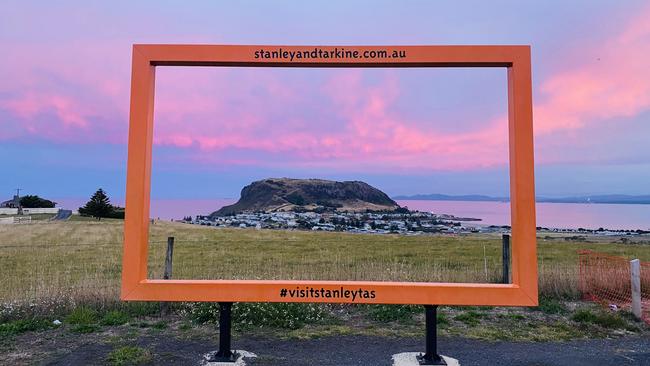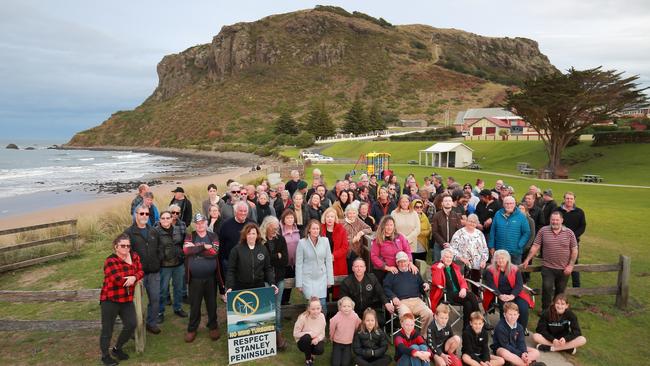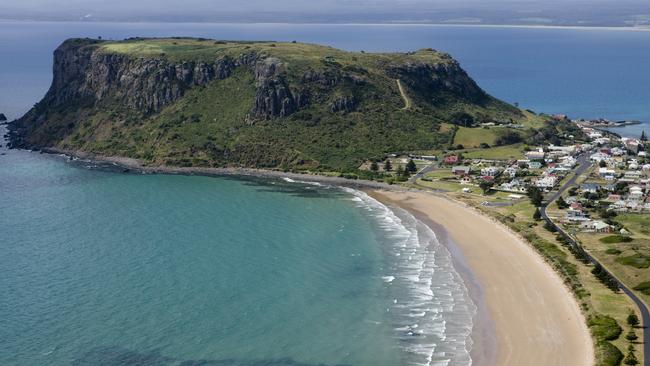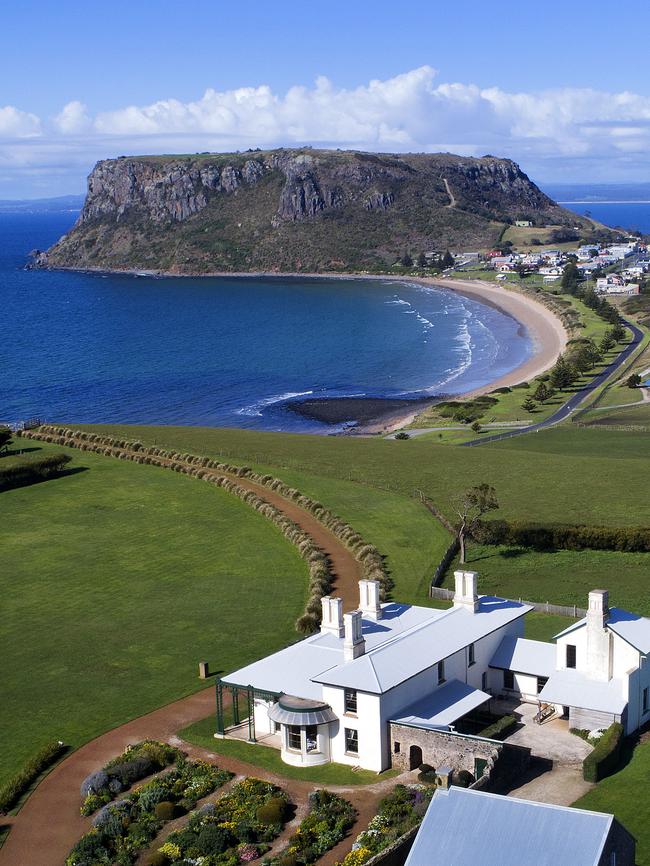Stanley residents engage lawyer as wind farm fight heats up
A lawyer who is representing “fence line communities” near wind farms around Australia is now acting for Stanley residents opposed to a proposal near the town’s famous Nut. LATEST >>

Tasmania
Don't miss out on the headlines from Tasmania. Followed categories will be added to My News.
UPDATE, JUNE 22:
STANLEY residents opposed to the building of a wind farm have engaged the services of a lawyer who is representing “fence line” communities impacted by turbine noise around Australia.
Dominica Tannock is also acting for the No Turbine Action Group which is against the proposed development of the St Patricks Plain Wind Farm by Epuron in Tasmania’s Central Highlands – the same company behind the Stanley project.
Epuron is holding a public information session in Stanley tonight and says it will come armed with detailed information about its Western Plains Wind farm proposal including photomontages to show what it would look like from various public viewpoints.

Already about 100 of the Stanley’s 500 residents have joined forces to oppose Epuron’s plan to build the 12-turbine wind farm on private farm land near Highfield House.
Locals say the turbines – which will be higher than the famous Nut – will scar the landscape, put a dent in Stanley’s tourism appeal and produce noise pollution.
Lawyer Dominica Tannock said she acts for numerous people in Victoria who lived near wind farms where developers had assured the communities that there would be no problem with noise.
“One person had to sleep in his car to get away from the noise impact and some people have been forced to abandon their homes,” Ms Tannock said.
Ms Tannock said her clients questioned whether Marshall Day Acoustics – hired to conduct the noise modelling for Epuron’s Stanley and Central Highlands proposals – could conduct modelling which could be relied upon in Environmental Impact Statements.

Epuron said the benefits of its Stanley project for the local community included up to 130 jobs during construction and a few ongoing jobs for operation, work for local contractors and a boost for nearby accommodation, retail and hospitality businesses during construction.
The company said a Community Fund of $3000 per installed turbine annually (indexed) would support local projects and amount to more than $900,000 over the 25-year life of the wind farm.
“Based on our project timeline we estimate that the wind farm could be operational by the first quarter of 2024 and contribute 50.4 megawatts to the Tasmanian grid,” the company said.
Epuron is developing its development application to go before the Circular Head Council with oversight by the Environment Protection Authority Tasmania.
It said key considerations included potential impacts on threatened fauna species during operation including birds and potential noise impacts.
“These matters require rigorous, technical and comprehensive assessment by independent specialists. The final assessments will be included in the project’s DPEMP and after this has been accepted by the EPA it will be put on public exhibition,” Epuron said.
The project has been referred to the Federal Department of Agriculture, Water and the Environment for review under the Environment Protection and Biodiversity Conservation Act.
EARLIER:
A TASMANIAN town recently voted the State’s top tourism spot is uniting against a wind farm proposal some say will be a scar on its famous landscape and damage its appeal.
Epuron is preparing a development application for a 12-tower wind farm to be built on farmland near historic Highfield House.
Epuron says on its website that assessment work for the proposed Western Plains Wind Farm — located at the tip of the Stanley peninsula — had been completed and it would submit the final Development Proposal and Environmental Management Plan to Circular Head Council and the Environment Protection Authority Tasmania in the next few months.

Tasmania’s far North West has attracted the attention of many wind farm developers.
There is a farm at Woolnorth, one at Studland Bay, another at Granville Harbour and a controversial proposal on the table to build a mega renewable energy park on Robbins Island and nearby Jims Plains.
Once operational the 12 turbines proposed for Stanley will contribute 50.4 megawatts of energy to Tasmania’s grid.
The owner of The Ship Inn, Kerry Houston, said Stanley’s bid for Top Tourist Town centred on its history, the iconic nut and vistas.
“The National Wind Farm Commissioner recommends that wind farms not be built within 5km of a township but this project is less than 4km from our charming historical village,” Ms Houston said.
“Local vets, nurses, farmers, lawyers and tourism operators are fighting to save Stanley from an industrialisation that would change this iconic Tasmanian landmark forever.
“The famous nut is 143m high and they are proposing to overshadow it with 12 150m-high turbines.

“The locals aren’t against renewable energy or hiding away from industry and believe industry can work in harmony with tourism. But imagine the outcry if they wanted to place 12 turbines on the Neck at Bruny?
“The renewables title can’t be a free pass to pillage Tasmania’s iconic sites, it comes with responsibility to place and to community.”
Stanley attracts more than 100,000 visitors each year and those against the wind farm proposal say it poses a significant risk to that tourism.
There is also concern about how much noise the turbines will generate.
“Many locals believe the Stanley Peninsula should have a scenic protection overlay and will hold a town meeting in July to discuss the Epuron proposal and will invite local councillors, politicians and the developer to hear their concerns,” she said.
The company will also hold an community drop is session in Stanley on June 22.


